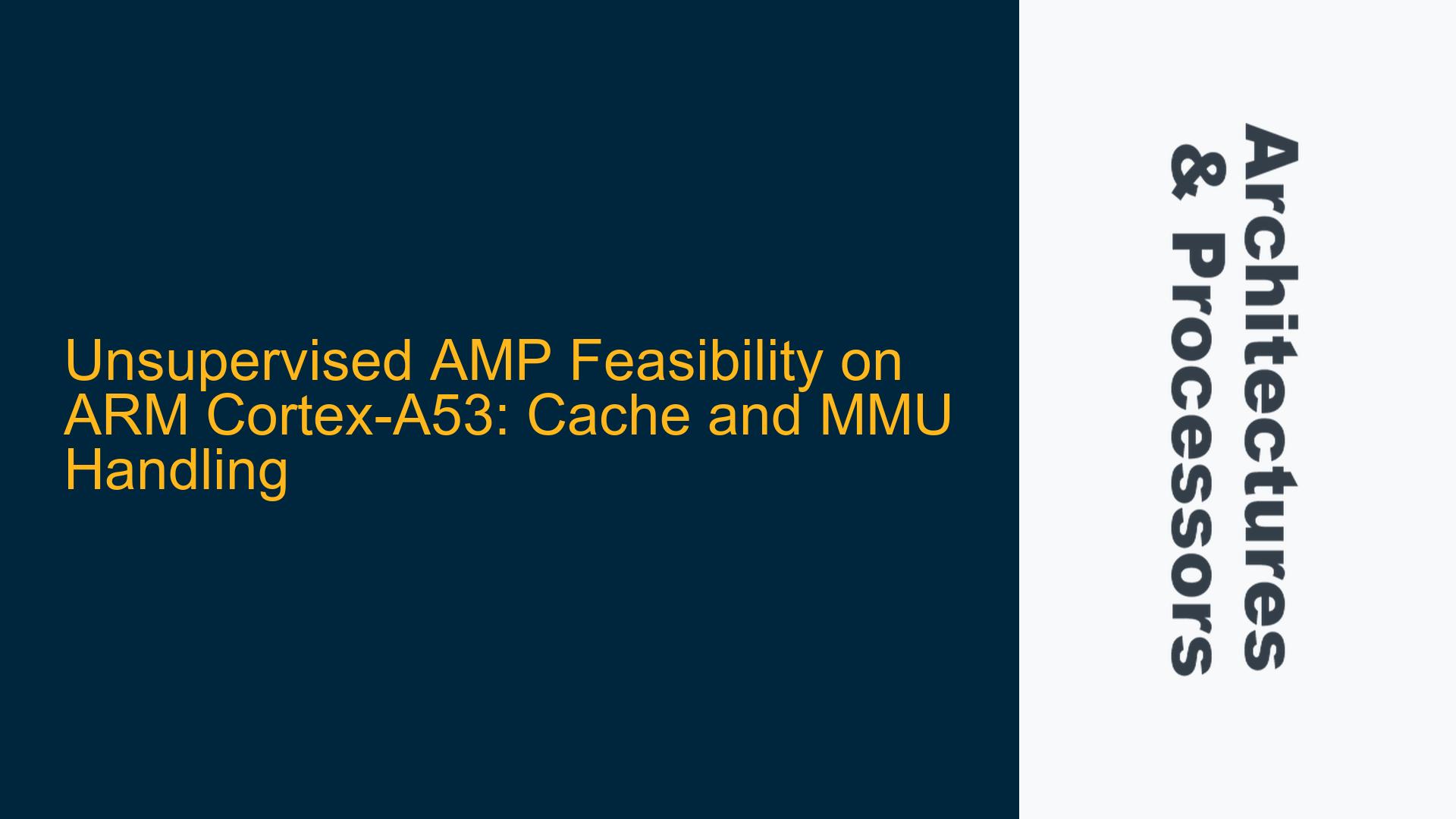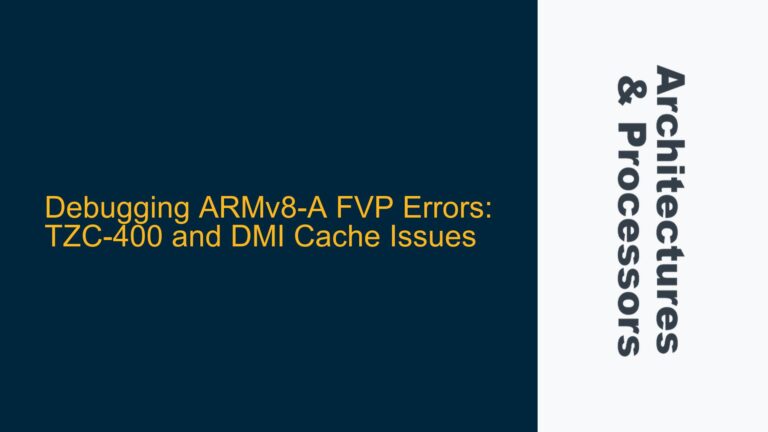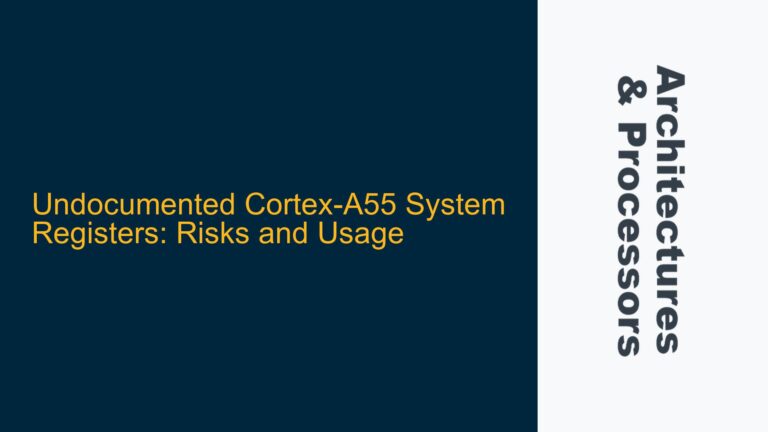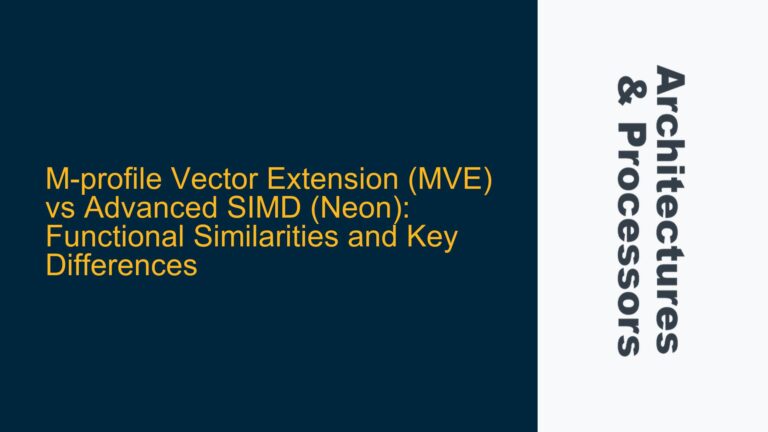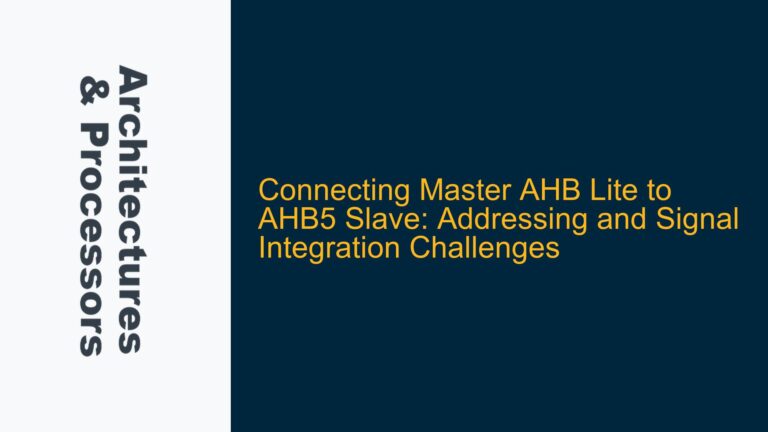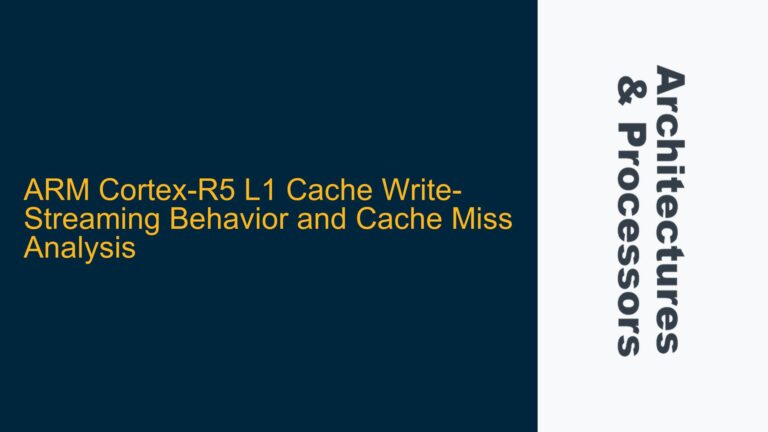Unsupervised Asymmetric Multiprocessing on ARM Cortex-A53
The ARM Cortex-A53, a widely used processor in the ARMv8-A architecture, is often deployed in multi-core configurations, including dual-cluster and quad-cluster setups. One of the advanced use cases for such configurations is Asymmetric Multiprocessing (AMP), where multiple cores run different operating systems or bare-metal applications independently. Unsupervised AMP takes this a step further by removing the need for a hypervisor or supervisory layer to manage inter-core communication and resource sharing. This approach can reduce overhead and improve performance but introduces significant challenges, particularly in managing cache coherency and Memory Management Unit (MMU) configurations across cores.
In unsupervised AMP, each core operates autonomously, potentially running different operating systems or real-time operating systems (RTOS). This autonomy necessitates careful handling of shared resources, especially the cache and MMU, to prevent data corruption, ensure coherency, and maintain system stability. The ARM Cortex-A53’s cache architecture, which includes Level 1 (L1) and Level 2 (L2) caches, along with its MMU, which supports virtual memory and address translation, must be meticulously configured to support unsupervised AMP.
The primary challenge in unsupervised AMP is ensuring that each core’s cache and MMU configurations do not interfere with the operations of other cores. Cache coherency is particularly critical because each core may have its own view of memory, and without proper synchronization, data inconsistencies can arise. Similarly, the MMU must be configured to ensure that address translations and memory protections are consistent across cores, even though they operate independently.
Cache Coherency and MMU Configuration Challenges in AMP
The ARM Cortex-A53 employs a cache coherency mechanism known as the ACE (AXI Coherency Extensions) protocol, which ensures that all cores in a cluster have a consistent view of memory. However, in unsupervised AMP, where cores may not be part of the same cluster or may not share the same coherency domain, maintaining cache coherency becomes more complex. The absence of a supervisory layer means that software running on each core must explicitly manage cache coherency, which can be error-prone and inefficient.
One of the key issues in unsupervised AMP is the potential for cache line conflicts. When two cores access the same memory location, their respective caches may hold different versions of the data. Without a coherency mechanism, one core may read stale data, leading to incorrect program behavior. Additionally, the ARM Cortex-A53’s MMU must be configured to ensure that each core’s virtual address space does not overlap or conflict with another core’s address space. This requires careful partitioning of the physical address space and precise configuration of the MMU’s translation tables.
Another challenge is the handling of cache maintenance operations. In a supervised AMP environment, the hypervisor or supervisory layer typically handles cache maintenance, ensuring that cache lines are invalidated or cleaned as needed. In unsupervised AMP, each core must perform these operations independently, which can lead to race conditions if not properly synchronized. For example, if one core invalidates a cache line while another core is in the process of accessing it, the second core may read incorrect data.
The ARM Cortex-A53’s MMU also presents challenges in unsupervised AMP. Each core’s MMU must be configured to map the same physical memory regions to the same virtual addresses across cores. This requires precise coordination and synchronization of MMU configuration updates. If one core updates its MMU configuration while another core is accessing the same memory region, it can lead to memory access violations or data corruption.
Implementing Cache and MMU Management in Unsupervised AMP
To implement unsupervised AMP on the ARM Cortex-A53, several steps must be taken to ensure proper cache and MMU management. These steps include configuring the cache coherency mechanism, partitioning the address space, and synchronizing cache maintenance operations.
First, the cache coherency mechanism must be configured to ensure that each core has a consistent view of memory. This can be achieved by using the ARM Cortex-A53’s cache maintenance operations, such as cache cleaning and invalidation. Each core must explicitly perform these operations when accessing shared memory regions to ensure that the data in the cache is up-to-date. Additionally, the use of memory barriers is critical to ensure that cache maintenance operations are performed in the correct order and that all cores see the same view of memory.
Second, the address space must be carefully partitioned to ensure that each core’s virtual address space does not overlap or conflict with another core’s address space. This requires precise configuration of the MMU’s translation tables. Each core’s MMU must be configured to map the same physical memory regions to the same virtual addresses across cores. This can be achieved by using a shared translation table or by synchronizing the translation tables across cores.
Third, cache maintenance operations must be synchronized across cores to prevent race conditions. This can be achieved by using hardware synchronization primitives, such as spinlocks or semaphores, to ensure that only one core performs cache maintenance operations at a time. Additionally, memory barriers must be used to ensure that cache maintenance operations are performed in the correct order and that all cores see the same view of memory.
Finally, the use of a distributed shared memory (DSM) system can help manage cache coherency and MMU configuration in unsupervised AMP. A DSM system allows multiple cores to share memory while maintaining cache coherency and ensuring that each core’s MMU is configured correctly. This can be achieved by using a combination of hardware and software mechanisms, such as cache coherency protocols and memory synchronization primitives.
In conclusion, unsupervised AMP on the ARM Cortex-A53 is feasible but requires careful management of cache coherency and MMU configuration. By configuring the cache coherency mechanism, partitioning the address space, synchronizing cache maintenance operations, and using a distributed shared memory system, it is possible to achieve unsupervised AMP on the ARM Cortex-A53. However, this approach requires a deep understanding of the ARM Cortex-A53’s cache and MMU architecture and careful implementation to ensure system stability and performance.
